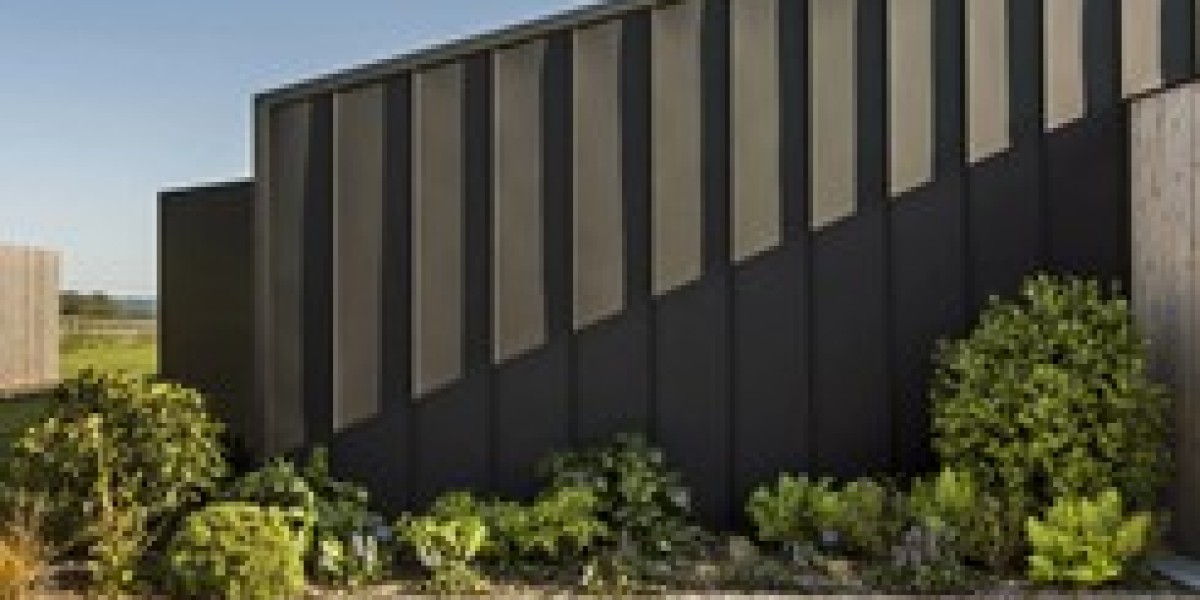When it comes to enhancing the exterior of your home, the choices can be overwhelming. Among the most popular options for homeowners in Bournemouth are cladding and rendering, both of which offer distinct advantages for improving the aesthetic appeal, energy efficiency, and overall protection of your property. But how do you decide which one is best for your home? Should you opt for cladding in Bournemouth or choose rendering to complete your exterior look?
What is Cladding?
Cladding is a material applied to the exterior walls of a building as a protective layer. It acts as a barrier to the elements, protecting the structure underneath from the effects of weather and wear. There are various cladding materials to choose from, including timber, metal, composite, vinyl, and stone. Each type of cladding provides a different visual aesthetic and level of protection, and can be adapted to suit your specific needs and preferences.
In Bournemouth, where coastal weather can be harsh with sea winds and rain, cladding offers a highly durable and practical option to ensure that your home’s exterior remains intact despite these conditions.
What is Rendering?
Rendering, on the other hand, involves applying a mixture of materials such as cement, sand, lime, or acrylic directly onto the exterior walls of a building. It creates a smooth, uniform surface that is typically painted afterward to enhance the look. Rendering can be applied to almost any surface, including brick, stone, or concrete, and it serves as a protective and decorative finish.
While rendering is often considered a more traditional approach to wall treatment, it can also be a modern, sleek option when combined with different pigments or finishes. In areas like Bournemouth, where properties are frequently subjected to the harsh effects of saltwater air, rendering can help to prevent weather damage by sealing the walls and providing a waterproof barrier.
Key Differences Between Cladding and Rendering
Understanding the basic distinctions between cladding and rendering is crucial to determining which is right for your Bournemouth property. Let’s take a closer look at the key factors you should consider when making your decision.
1. Aesthetic Appeal
Both cladding and rendering can significantly transform the look of your home, but they offer different visual styles.
Cladding: Cladding offers a more textured and layered appearance. Depending on the material you choose, it can bring a natural, rustic charm or a sleek, modern edge. For example, timber cladding adds warmth and a natural aesthetic to your home, while metal cladding can give your property a bold, contemporary feel. Cladding allows for more variety in terms of finishes, and it can create a unique look that makes your home stand out.
Rendering: Rendering provides a smooth, uniform surface, making it ideal for homeowners who prefer a minimalist, sleek look. While rendering can be finished in a variety of ways—such as smooth, rough, or even textured—its visual appeal is generally subtler compared to cladding. The uniformity of rendering can give a home a clean, fresh, and modern appearance, especially when painted in contemporary colors.
2. Durability and Protection
When it comes to durability and protection, both cladding and rendering provide benefits, but the extent to which they protect your property varies depending on the material used.
Cladding: Cladding is generally more durable than rendering, particularly when using materials such as metal, composite, or timber. These materials are designed to withstand the elements, including wind, rain, and even coastal salt air, making cladding an ideal choice for homes in coastal areas like Bournemouth. Cladding creates a protective barrier that shields your walls from direct exposure to the weather, preventing potential issues such as water ingress and the damage caused by the elements.
Rendering: While rendering also provides protection against the weather, it can be more prone to cracking over time, especially in areas with extreme weather conditions. The cement-based rendering can wear down more quickly compared to cladding, particularly in coastal environments where saltwater can speed up the erosion process. However, modern synthetic renders, like acrylic or silicone-based rendering, offer enhanced durability and greater resistance to cracking and staining.
3. Insulation and Energy Efficiency
Both cladding and rendering can contribute to improving your home’s energy efficiency, but in different ways.
Cladding: Many types of cladding, particularly those made from composite or timber, can provide additional insulation to your property. When applied with an appropriate layer of insulation behind it, cladding helps to reduce heat loss in winter and keeps your home cooler during the summer months. In Bournemouth, where homes are often exposed to fluctuating temperatures, this added insulation can reduce your heating and cooling costs and improve overall comfort.
Rendering: Rendering, especially when applied with a thermal coat or insulation backing, can also improve your home’s insulation. Insulated render systems (often known as external wall insulation or EWI) can significantly reduce heat loss through the walls. This makes it an excellent choice for improving energy efficiency while providing a smooth, protective finish. However, cladding generally offers superior insulation when compared to standard rendering.
4. Maintenance Requirements
One of the most significant factors homeowners need to consider is how much maintenance their chosen exterior finish will require.
Cladding: Cladding is generally low-maintenance, especially when using durable materials like metal, uPVC, or composite. These materials are resistant to weathering, corrosion, and fading, meaning they won’t need frequent repainting or repairs. However, timber cladding may require periodic maintenance such as staining or sealing to preserve its appearance and protect it from the elements.
Rendering: While rendering is also low-maintenance, it does require some attention to prevent cracks, especially if your property is located near the coast, where the salty air can have a corrosive effect. Over time, the render may need to be repainted, particularly if it starts to show signs of weathering or staining. Cracks in the render can allow moisture to seep in, which could cause more serious damage if not addressed promptly.
5. Cost
Both cladding and rendering come with their own costs, which vary depending on the materials used and the size of the property. Typically, cladding tends to be more expensive due to the variety of materials and the labor involved in its installation. For example, timber or metal cladding can be more costly than rendering, and the additional insulation options often increase the overall price.
Rendering, on the other hand, is often considered a more cost-effective solution, especially if you opt for traditional cement-based render. However, the cost can increase if you choose high-end finishes, like synthetic or insulated render systems. Additionally, while rendering might initially cost less, you should also factor in the potential for repairs or repainting over time, which could add to the overall maintenance costs.
6. Installation Process
Both cladding and rendering are relatively straightforward to install, but the processes differ.
Cladding: Cladding installation can take longer, especially if you opt for more complex materials like timber or metal. However, the installation is often less intrusive since cladding can typically be applied over the existing wall surface. It also requires professional installation to ensure it is applied correctly and securely.
Rendering: Rendering generally has a quicker installation process. It is applied directly to the wall and does not involve layering multiple materials. However, the wall must be prepared and cleaned thoroughly before rendering to ensure proper adhesion. Like cladding, rendering is best applied by professionals to avoid imperfections that could affect the overall look and performance.
Conclusion: Cladding or Rendering for Your Bournemouth Property?
Ultimately, the decision to choose cladding in Bournemouth or rendering comes down to your specific preferences, budget, and property needs. If you're looking for a contemporary, low-maintenance, and durable exterior that offers excellent insulation and long-lasting protection, cladding is likely your best option. Timber, metal, or composite cladding can add significant visual appeal to your home while providing a robust defense against coastal weather conditions.
On the other hand, if you're seeking a smooth, sleek finish with good insulation properties and a more affordable solution, rendering may be the way to go. It can offer the aesthetic you desire while being relatively easy to maintain, provided you choose the right materials and keep up with repairs when needed.
In Bournemouth, where coastal elements can quickly take a toll on your home’s exterior, both cladding and rendering offer substantial protection, but the choice ultimately depends on the level of maintenance you’re willing to commit to, your design preferences, and your budget.
No matter which option you choose, both cladding and rendering can enhance the look, energy efficiency, and value of your property—so make sure to weigh the pros and cons carefully to make the right decision for your home.








